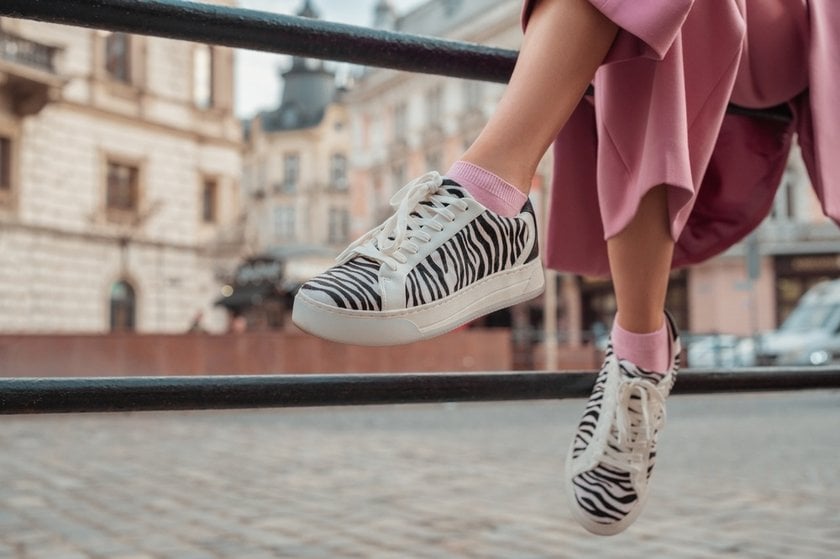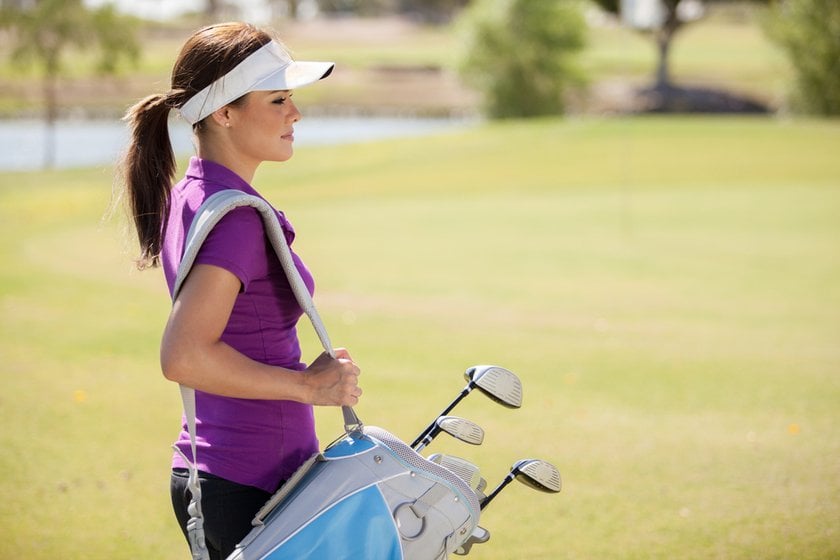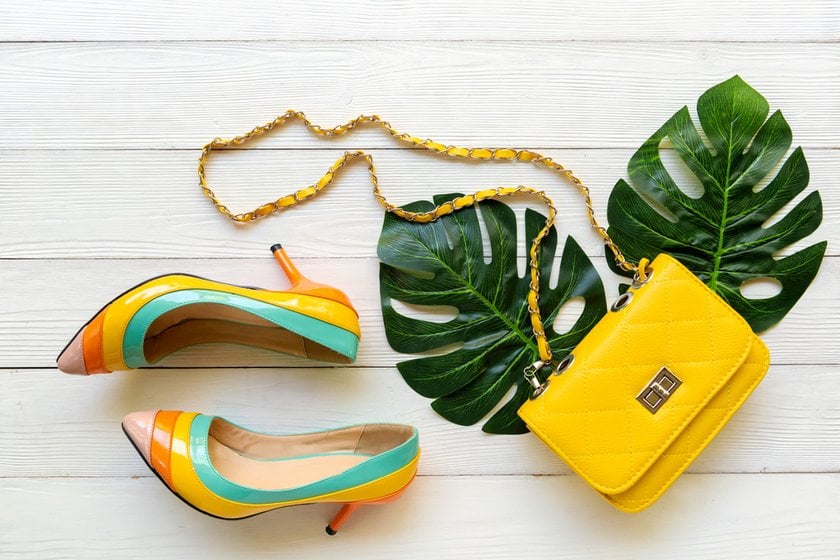Lifestyle Product Photography: Showcase Products in Action
June 20, 2024

Elevate your product photography with dynamic lifestyle shots that highlight your products in action. Grab the attention of potential customers and make your offerings truly stand out.
Showcasing products has long been a staple of photography. Companies need to demonstrate their exciting new offerings to potential customers, capturing the attention of passers-by on the street, readers of the morning newspaper, and, in our digital age, those scrolling through social media.
There are numerous approaches to photographing a product: a straightforward e-commerce shot, placing the product within a decorative set, showcasing the item's ingredients, and much more. In this article, we will focus on lifestyle shots—images that show the product in use and the variety of ways this can be achieved. For certain products, this task can be quite challenging; after all, we are photographers, not videographers, and variety of different elements within a single still frame.
Let’s explore how to take the perfect lifestyle product photography shot, showcasing products in action.
Lifestyle Photography: Definition
First of all, let’s get a good understanding of lifestyle photography and when best to choose this method of showcasing a product over others. Let's try to answer three key questions related to the topic.
What?
Lifestyle photography, within the context of product photography, involves showcasing products in use within real-life scenarios. This approach is a staple of advertising campaigns and has been around for decades. From car advertisements showing families enjoying scenic drives, to images of happy families gathered around a new television set, or stylish clothes worn by elegant models in luxury places—these images are designed to forge a connection between the product and the consumer's lifestyle, enhancing the product's appeal through relatability and context.
Turn Clicks into Sales with Better Images
Discover Luminar NeoWhy?
Choosing lifestyle photography can be driven by several factors, the most significant being relatability. It's about potential customers seeing themselves in the scene, using the product just like the model in the image. This visualisation makes it easier for viewers to imagine the product enhancing their own lives. Moreover, lifestyle shots can demonstrate how a product works or provide additional context about its use.
How?
Let’s create a scenario: A sunscreen brand wants to book you for a shoot and requests 5 lifestyle photos for their upcoming summer campaign. Now, the fact they have said lifestyle will mean that you aren’t heading to the studio to set up your lights and get to work. Instead, you and a model are heading to the beach and will capture the product in a natural environment.
Here are 5 lifestyle photo ideas you can pitch to the brand:
A model applying sunscreen to their body.
A model pulling sunscreen out of their bag.
A model squeezing sunscreen onto their hand.
A model holding the sunscreen tube.
A model sunbathing with the product displayed nearby to signify protection from the sun.
These images will help viewers easily picture themselves using sunscreen on their next beach day. But that was just an example. Now, let’s dive into the fundamental basics of preparing for and conducting a successful photo shoot.
Planning Your Photoshoot
Crafting the perfect lifestyle shot requires thoughtful preparation. Before you rush off with your camera, consider these key aspects to develop a well-rounded plan:
Natural Environment: Where is this product generally used? This setting will provide immediate context for your photos, helping viewers understand the product's application in real life.
Target Audience: Who is the product aimed at? The person featured in your image should resonate with your intended demographic, making it easier for viewers to see themselves in the scenario.
Product Use: Consider how the product is used and identify the most visually impactful moment of its use. Let's explore this with an example below.
A Scenario in Action: From Concept to Completion
Let's take a look at a real-life case and how we can handle it.
Product: A golfing brand ready to launch their new club.
Initial Pitch | Golfer carrying their golf bag, which contains the new club, they are walking and smiling on a bright sunny green. |
Detailed Analysis of an Idea | In this pitch, we have context, the golf club is in the right environment, and the person holding the club is a golfer–the target audience. However: 1. This may look more like you are advertising the golf bag, with the club hard to spot among the others, or it may even look like you’re advertising the course. 2. We can’t see the whole product. |
After thinking about this idea in more detail, we realized that it wouldn't be a great way to advertise the new golf club. Therefore, we need to come up with a new idea.
Revised Pitch | A golfer at the top of their swing, smiling proudly as they watch a perfect drive into the distance on a bright, sunny day at a lush green course. |
Detailed Analysis of an Idea | This image captures the satisfaction and joy associated with using the club, directly appealing to potential customers by showcasing the emotional reward of owning the product. Moreover, with this approach, it is more apparent that the club is the focus of the advertisement. |
This example illustrates that simply placing a product in its typical environment isn't enough. You must also consider how best to highlight the product effectively, ensuring it's the focal point and clearly communicates its value to the viewer.
By carefully planning these elements, you can create compelling lifestyle images that not only showcase the product in action but also resonate deeply with potential customers.
Selecting Props and Models
To add more context to our lifestyle shots, we can add props and models to make the situation seem more natural and relatable. There are also some important things to consider when choosing a model, so let’s break down these aspects of our shoot.
Props and Product Placement
Effectively incorporating props into lifestyle product photography is crucial for setting the scene without overshadowing the main product. The right balance can enhance the image, providing context and relatability while ensuring the product stands out.
Scenario
Product: A cosmetic company launching a new lipstick. The brand wants a shot with the lipstick being featured alongside everyday items from a handbag.
Pitch: A handbag with spilt contents on a table, including a hairbrush, hand cream, phone, and mirror, with lipstick strategically placed in the centre. The model's hand points towards the lipstick, as if reaching to pick it up.
Now let’s break down the shot.
Environment: The setup mimics a realistic scenario where the product might be used, adding authenticity to the image.
Relatability: The handbag and its contents appeal to the target demographic, enhancing connection.
Focus on Product: Directing the model's action towards the lipstick focuses attention on it, as does placing it in the centre of the frame. Use lighting and colour theory to ensure the lipstick stands out—perhaps by keeping other items neutral in colour and using lighting that gradually fades from the centre to the edges of the frame.
Model Selection
Choosing the right model is as important as the setup itself and should resonate with the intended audience.
Scenario
Product: Kneepads designed for elderly gardeners.
Initial Pitch: A young, athletic bodybuilder model in a garden wearing kneepads, tending to a lovely flowerbed.
Issue: Pensioners looking at this image are going to be simply confused by this photo.
Revised Pitch: An elderly couple in a garden, smiling and laughing, while happily using the kneepads to tend to flowerbeds.
Thoughts: This imagery is more appropriate and relatable for the intended demographic, effectively conveying the product's usefulness and comfort in a genuine setting.
Ensuring your model reflects the target audience is crucial. An accurate representation can make the product more appealing and relatable, thereby increasing its potential impact and effectiveness in marketing.
Discover the Power of AI in Portrait Editing
Dive In Now!Shooting Techniques for Lifestyle Photography
Lifestyle photoshoots, whether set indoors or outdoors, present unique challenges and opportunities. Here’s how to tackle them effectively:
Lighting
For indoor shoots, employ standard indoor lighting techniques to illuminate your products effectively. We recommend checking out our comprehensive guide for tips and tricks. Shooting outdoors is easier in some ways because natural light is better. However, ensure the weather conditions complement the product's usage. I also recommend using reflective boards can help fill in shadows and evenly distribute light across your subject.
Shutter Speed
Capturing products in action requires a fast shutter speed to freeze motion without any blur. However, if adding a sense of movement enhances the narrative of the image, consider intentional motion blur, which can be more controlled in post-production. Remember, high shutter speeds may require more light to compensate, so plan your lighting to avoid increasing ISO excessively, which could introduce noise.
Framing and Composition
The composition should clearly highlight the product as the focal point of the image. Be cautious of other elements, such as props or models, overwhelming the scene or relegating the product to an unnoticed corner. Every element in the frame should support and not detract from the product being showcased.
Taking high-quality lifestyle photos is a skill that improves with practice. Regular test shoots and critical reviews of your work will deepen your understanding of what techniques best highlight the product in various scenarios. Don’t be disheartened by initial setbacks; persistence is key in mastering lifestyle product photography.
The Bottom Line
Lifestyle product photography is immensely enjoyable, often taking you beyond the confines of the studio into environments where the products naturally belong. However, to ensure a successful shoot, it's vital to consider the elements discussed in this guide. Your product should not only be showcased in its natural setting but also resonate with the intended audience. They should be able to envisage themselves using the product just as your model does, and the model should represent the product’s target demographic convincingly.
Moreover, the product usage depicted must be clear and compelling, showcasing the product in its entirety. Of course, you can break the rules—for example, picturing a bodybuilder using kneepads designed for elderly gardeners could amusingly suggest how empowered the elderly might feel using them. If a brand is on board with such an unconventional approach to capture viewers' attention, then by all means, go ahead! But generally, brands prefer more relatable and traditional portrayals in their advertising. Whatever the approach, the process of lifestyle photography is rewarding, so with a solid plan in place, dive in and enjoy the creative journey!










